
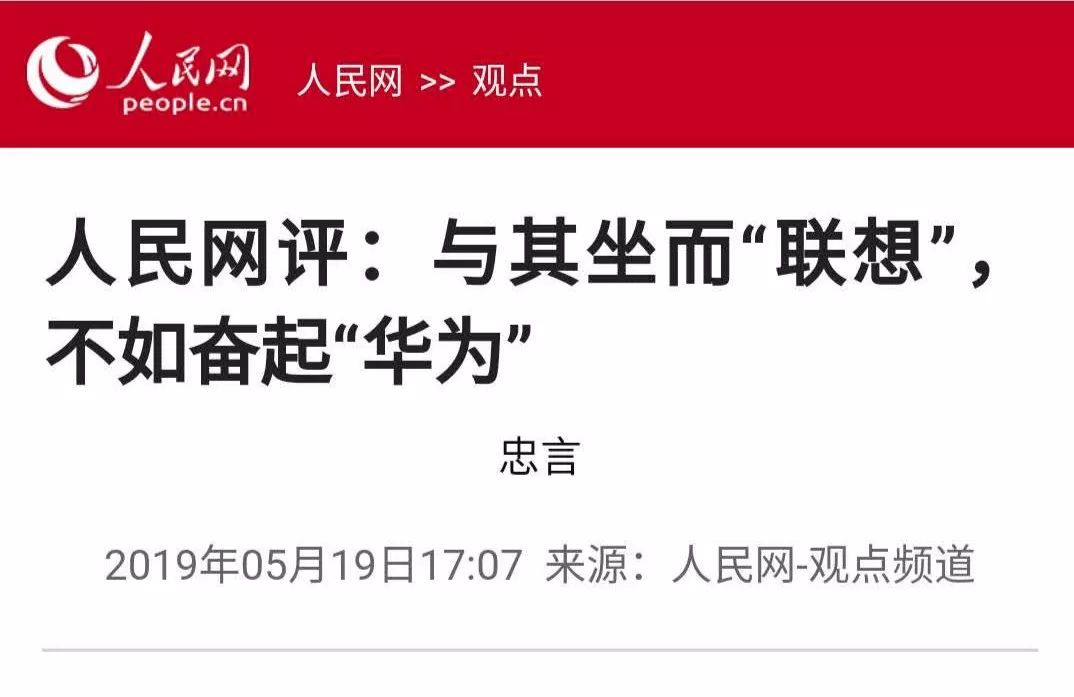
Produced by Cool Play Lab
Source | Cool Play Lab (ID: coollabs), authorized
In May 2019, after nearly a year of continuous “5G voting incident refutation” by Lenovo, Chinese netizens’ resentment towards Lenovo reached its peak.
I have always felt that among Chinese companies, Lenovo is particularly suitable for writing “rebirth stories”.
When I was a child, Lenovo was a well-known “national brand”; today, Lenovo is widely recognized as the “conscience of the American Empire”—
the “persona” of a company can collapse to such an extent.Lenovo claims to be first, while Baidu only dares to claim second.
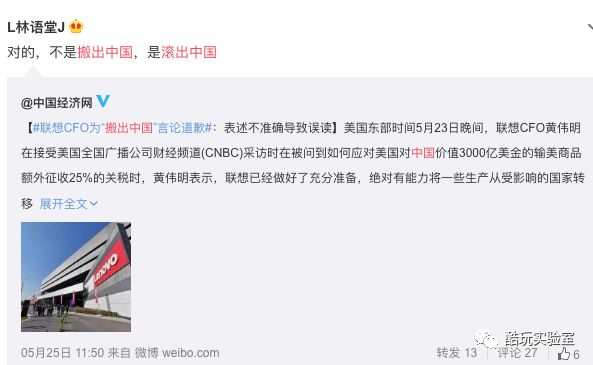
Having a good hand of cards, yet playing them poorly.
This is not an article intended to criticize Lenovo and then walk away. Because we have seen too many such articles recently.
I believe no one wants to be criticized. If one is criticized to such an extent yet still insists on walking this path, it shows that their heart is very determined. Or perhaps,they simply have no other path to take.
I also believe that no Chinese person, deep down, would want to be the “conscience of the American Empire”.
A Chinese person, if given a choice, would still prefer to be a Chinese person.
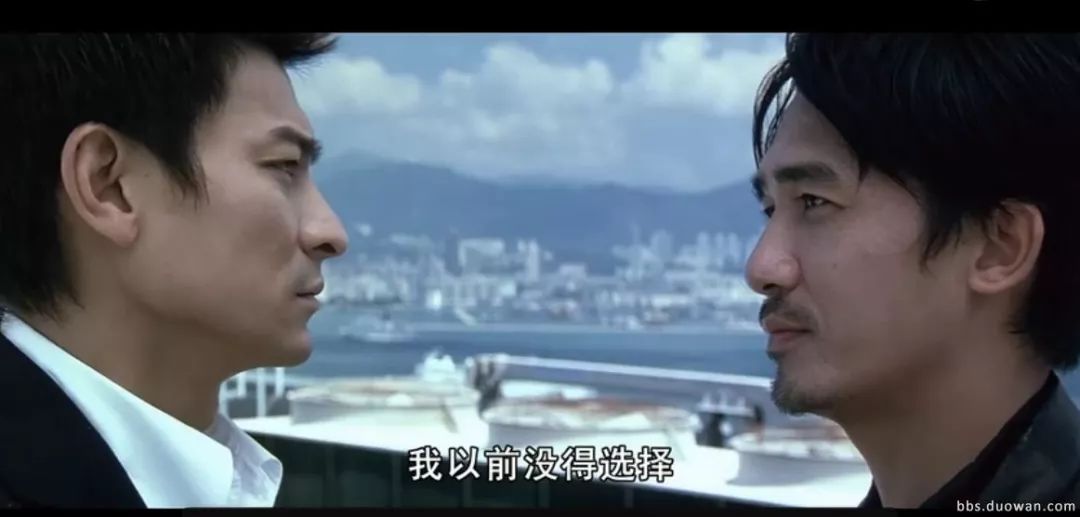
The problem is, Lenovo today may have no choice.
What persistence, all depends on sheer endurance.
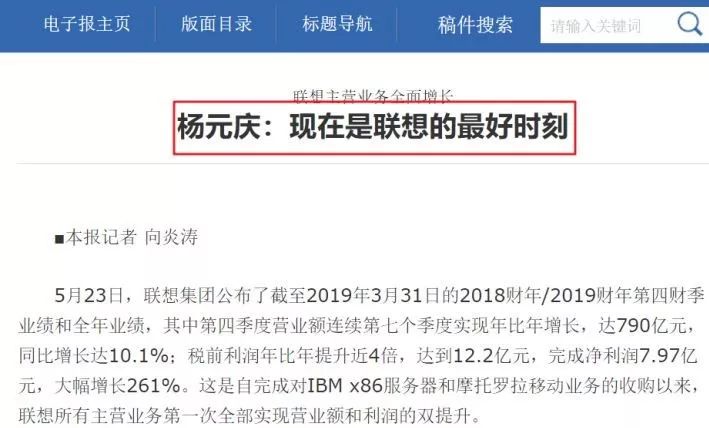
How did a good national brand like Lenovo fall into such a vicious cycle of “being criticized → persisting → being criticized even worse”?
If it could start over, would it have a chance to become Huawei?
1
Lenovo actually started three years earlier than Huawei.
In 1984, in Zhongguancun, Beijing.
Three men sat in an office, frowning,the company had reached a dead end. They had been in business for less than half a year, and 140,000 of their 200,000 startup funds had already been swindled away.
A few big men in the office,using a cart to sell sports pants, roller skates, and electronic watches on the street to make a living.
Wang Shuhe, Liu Chuanzhi, and Zhang Zuxiang,they were formal employees of the New Technology Development Company under the Chinese Academy of Sciences. But if they continued like this, they might be arrested as “speculators”.
They couldn’t go on like this.
On the day that determined the company’s survival,the three of them wrote their thoughts on slips of paper,after silently counting to three, they opened them simultaneously,and all three slips had the same name—
“Ni Guangnan”
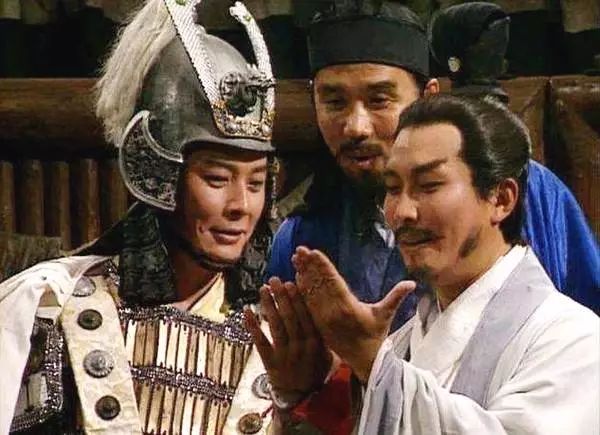
At that time, Ni Guangnan was in high spirits, a hot commodity in the Chinese computer field.
A year earlier, he had just turned down a lucrative offer from Canada,bringing back the main components needed for the R&D of the Chinese character card at his own expense.He said: “If I don’t come back, everything I do in the future won’t help Chinese manufacturing.“
Indeed, within a year, Ni Guangnan had made significant progress.
In the entire city of Beijing, holding core technology, he was offered high salaries by countless companies, but he turned them all down. Because he only wanted to make the “Chinese character card”.
At this time, Liu Chuanzhi and others were also very worried.Would such a super expert come to our small temple that might not have a tomorrow?
Unlike Ni Guangnan,Liu Chuanzhi came from a poor background.
Liu Chuanzhi recalled the famine during his middle school years: his family had only half a jin of oil each month, and he could only use chopsticks to dip a few drops for cooking. When he was extremely hungry,he would get up at night to find something to eat, indiscriminately swallowing silver needle detox pills.
Young Liu Chuanzhi participated in labor production in Baoji. A young laborer earned eight cents a day.
No profit, not enough to eat.The fear of survival dominated Liu Chuanzhi’s later life..
At 40, Liu Chuanzhi was ordered to start a business to transform technology into productivity. This rookie in the business world paid 140,000 as “tuition”.
To survive,he turned around and sold roller skates and electronic watches, even if it had nothing to do with his entrepreneurial original intention.
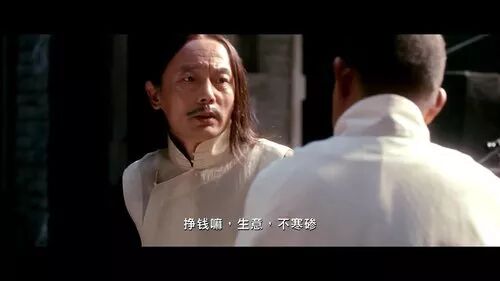
At the end of the Eastern Han Dynasty, the world was in chaos, and Liu, Guan, and Zhang visited Zhuge Liang three times.
At this moment, when the company was in a desperate situation, Liu Chuanzhi and the others decided to personally visit Ni Guangnan’s home to invite him to join.
Ni Guangnan developed our own “Chinese character card” and wanted to find a market to apply it, while Liu Chuanzhi and others needed to exchange technology for the market, which seemed to be a perfect match.Ni Guangnan agreed: to serve as chief engineer.
However, he made one condition:no official position, no media interviews, no banquets.
He only wanted to be a pure scientist.
Within just half a year of joining the company, Ni Guangnan launched the first “Lenovo-style Chinese character card” suitable for PC, selling 3 million that year. The fate of this seemingly hopeless company was thus changed.
Also because of Ni Guangnan’s “Lenovo-style Chinese character card”, in 1989, the company officially changed its name to “Lenovo”.
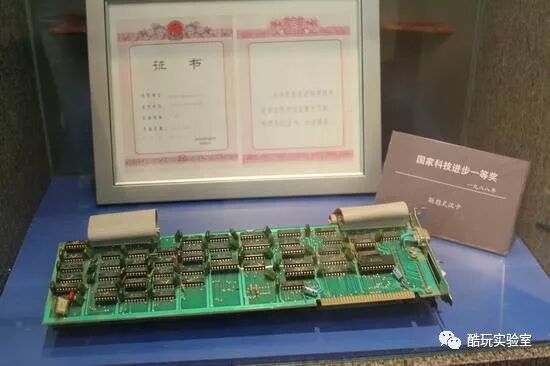
However, the Z80 chip used in the Chinese character card still came from an American company.
From that time on, Ni Guangnan insisted,technologically, we must follow the path of independent research and development.
In 1988, Ni Guangnan went to Hong Kong to establish a research and development department. The following year, he independently developed the chip for the Chinese character card, and all products were changed to independent.
At this time, Lenovo, relying on the products developed by Ni Guangnan’s team, had annual revenues of tens of millions.
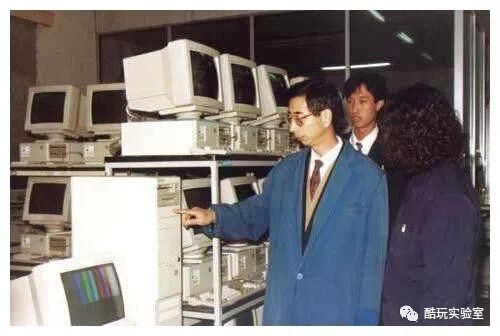
Then, he led the entire board card team to independently design the entire motherboard and motherboard chip.
In 1991, Ni Guangnan led the team to independently develop printer chips.
Surprisingly, the chips they developed were even better than those developed by the printing giant HP at that time. Thus, with the cooperation with HP, Lenovo’s momentum soared.
Next, in 1992, Ni Guangnan began to fully develop program-controlled switches. Two years later, it was successfully developed.
Today we all know that Huawei is the technical leader in the global communications industry. However, at that time, Huawei, which started with 21,000 yuan, had total revenue that could not match Lenovo’s one program-controlled switch product. The technology was far behind Lenovo.
Moreover, Ni Guangnan was also tirelessly researching,almost one product per year.
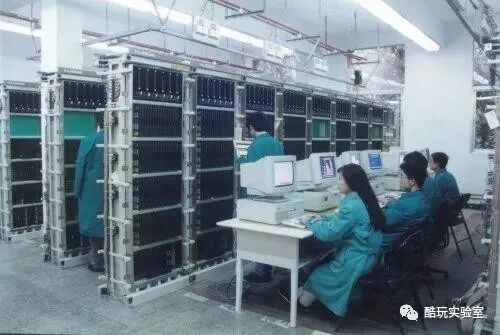
In 1993, Ni Guangnan developed a financial platform software. Once launched, it was also very popular.
Every technology developed by Ni Guangnan’s team was like a hen laying golden eggs. This series of outstanding achievements bore fruit in 1994,when Ni Guangnan was elected as one of the first academicians of the Chinese Academy of Engineering..
At that time, Liu Chuanzhi was also a rare operational and sales talent.
The two of them complemented each other, and within a few years, Lenovo rapidly became the leader of Chinese technology enterprises.
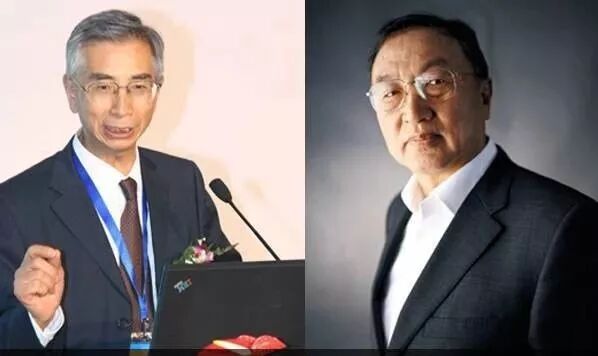
However, the seeds of disaster had long been sown on Lenovo’s glorious path.
Research and development of technology requires huge financial support. In 1987, the later influential TSMC was established with an investment equivalent to 45 million US dollars. At that time, Lenovo’s revenue was only tens of millions of RMB, and they had never dealt with chips,not even enough money to buy the software tools needed for design.
Although Ni Guangnan led the technology team to advance rapidly, it brought enormous pressure to the finances.
The key was that Liu Chuanzhi also discovered:competing for the market does not necessarily rely on technology; the most important thing is customer satisfaction.
Lenovo’s technology team had some failed products: the four-type Chinese character card, single-board machine…which had been developed with great effort but were rejected by the market one after another.
In contrast, some simple and lightweight ideas, such as one-click internet access and one-click repair, achieved great success.
Should they continue to focus on technology or shift to market-oriented marketing?
This was not originally a choice question, but for Lenovo, which had been in business for ten years, with limited manpower and resources, this was their most realistic problem.
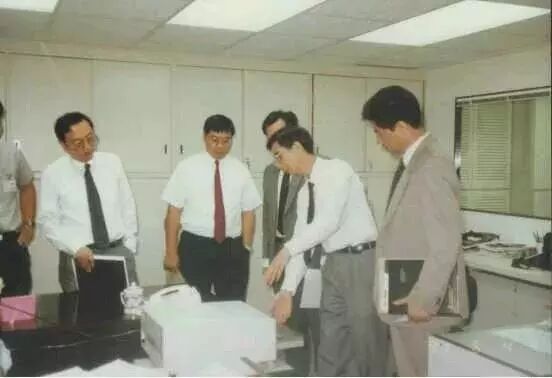
In 1995, Lenovo reached a crossroads in its fate.
On June 30, more than 200 middle and senior managers of Lenovo sat densely in the headquarters conference room.
Only one table and two chairs were placed on the podium.
The highest authority of Lenovo—the Chinese Academy of Sciences sent a representative to read“Report on the Disagreement in Lenovo Group’s Leadership Team”.
At this moment, it was merely the outbreak of contradictions. Their quarrels had lasted for two years.
The cause was that at the end of 1993, Ni Guangnan established the “Lenovo Microelectronics Design Center” to develop its own CPU.
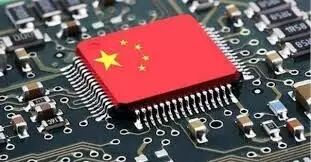
This is a core component that all PC products need. At that time, the Wintel alliance formed by Microsoft and Intel almost monopolized the global market, with only Japan still making a last-ditch effort.
Perhaps Ni Guangnan realized that this was China’s last chance to strike and prevent the market from being bloodied.
However, this product was not like the previous series of chips, which were simple to operate and required small investments.This was a product that could jeopardize Lenovo’s entire fate, which they could not afford.
But Ni Guangnan was anxious. At this time, he was already 54 years old. Whether the product could be launched before retirement was still a question. He understood deeply the importance of technology to China.
So, in 1993, Ni Guangnan used his strong connections to team up with Changjiang Computer Company and Fudan University to develop it.
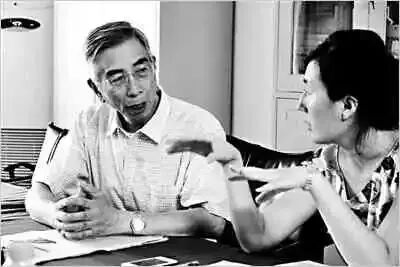
However, in Liu Chuanzhi’s eyes, challenging Intel’s CPU might be the most thankless job in the world.
Lenovo’s PC business was already a stable cash cow.Liu Chuanzhi also rode the wave of real estate. Since 1992, he had been buying land in cities like Yantai, Fuzhou, and Huizhou to establish Lenovo Industrial Parks.
Lenovo Group’s vice president Li Qin often quarreled with Ni Guangnan.He said that Ni Guangnan would bring hundreds of R&D projects for application every year, most of which were unprofitable, so of course, I had to point it out.
The two began to frequently consume each other internally.Liu Chuanzhi replaced the financial director, and Ni Guangnan reported Liu Chuanzhi for personal economic issues.
Liu Chuanzhi stated that he could no longer work with Ni Guangnan.
The final decision of Lenovo Group was—retain Liu Chuanzhi and dismiss Ni Guangnan from his positions as chief engineer and director.
2
In 1999, Ni Guangnan, who was already 60 years old, left Lenovo.
Having been dismissed, he called on Lenovo:Please do not dismiss my work results.
He feared that his achievements would also be dismissed along with Lenovo. Unexpectedly, this became a prophecy, as Lenovo almost dismantled all technical teams and completely transformed into a trading company.
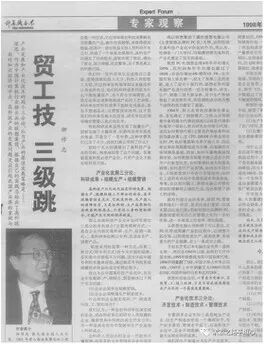
In 2000, the internet bubble burst, and almost all technology companies were affected: NetEase’s issue price was 15 dollars, dropping to 0.47 dollars, and was delisted from NASDAQ; the stock price of China.com shrank to 1/200 of its market value and was acquired out.
Liu Chuanzhi witnessed the sudden deaths of countless technology companies and decided:to shift Lenovo’s business focus.
From that year on, Lenovo established Lenovo Holdings and boldly entered various industries.
Shenzhou Car Rental, Baibo Dental, real estate company Rongke Zhidi, internet finance company Lakala, fruit company Jiawo Xinrongmao, private equity and venture capital companies Junlian Capital and Hongyi Investment… Lenovo made efforts everywhere, except in its old business.
However, Liu Chuanzhi’s path was flourishing. That year, Lenovo was officially included in the Hang Seng Index of the Hong Kong Stock Market.
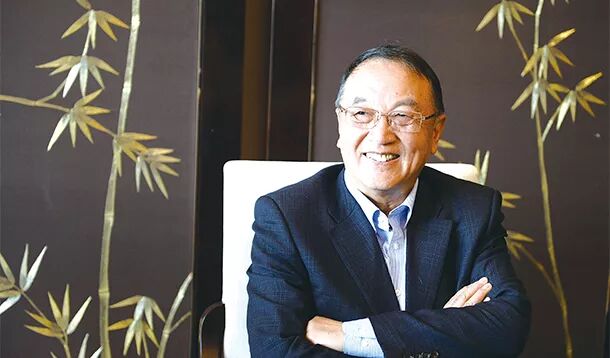
Liu Chuanzhi’s Lenovo was vibrant, while Ni Guangnan became the one who was dismissed. Approaching retirement age, he still had a strong desire—to create China’s own operating system and chips.
He always remembered the words of Minister of Science and Technology Xu Guanhua: “China’s information industry lacks chips and souls.” Chips are chips, and souls are operating systems.
This is the pain of Chinese technology.
Coincidentally, in September 1999, Li Delei, who restructured the nearly bankrupt BBT into “Zhongxinwei”, found Ni Guangnan. Ni Guangnan and Li Delei met during a study visit in Canada.
Although they had not had much interaction before, this “Zhongxinwei” (the predecessor of Ark Technology) technical team had undertaken Motorola’s outsourcing business and also worked on Hitachi’s chip business.
From this team with a technical gene, Ni Guangnan seemed to see the hope of “Chinese chips”.
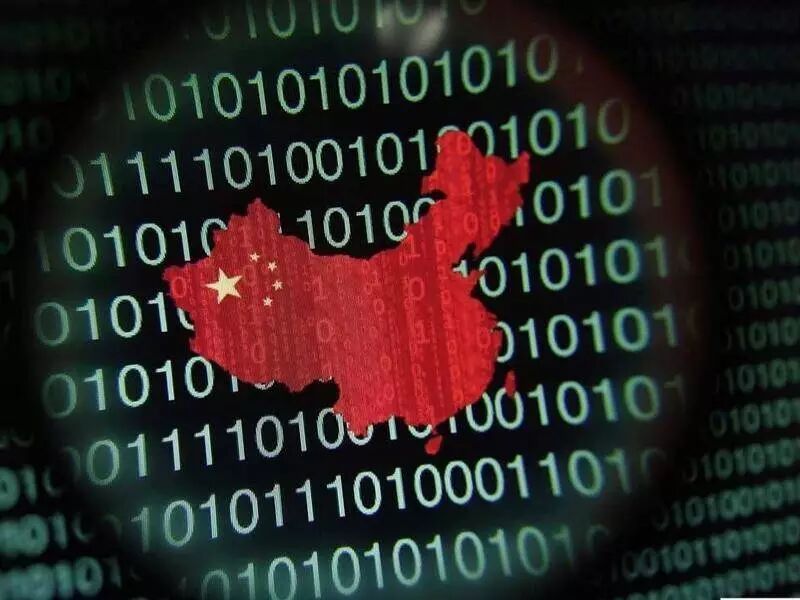
He asked for not a penny or a share, dedicating everything to help Li Delei find people, money, and resources, and even brought in projects from the Ministry of Science and Technology.
In April 2001, China’s first independently designed embedded chip “Ark No. 1” was born. China finally had its own chip.
Next, “Ark No. 2” was developed.
The state also began to invest funds to support and fully cooperate with the promotion of Ark chips.
The Beijing municipal government directly ordered tens of thousands of units, and many departments of the State Council, as well as other industries, were called together to support domestic chips.
Meanwhile, Ni Guangnan also used his connections to bring in many corporate clients, but Li Delei refused to supply them,he had only planned to sell these goods to government clients from the beginning.
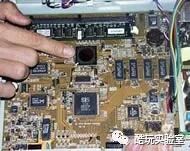
Because the operating system had long been monopolized by the Wintel alliance, it did not support the technology developed by Ark, and various software were incompatible. The market would not pay for it.
However, government personnel also complained that the machines they bought had become waste iron that was sealed away.
Meanwhile, Li Delei also abandoned the development of “Ark No. 3”.
Ni Guangnan had gambled his credibility to bring in clients but could not supply them; Ark No. 3 could not continue development, and he had no choice but to leave Ark.
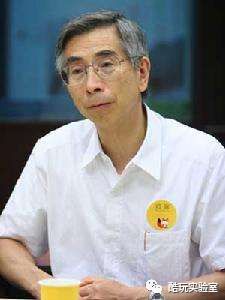
At this time, however, Li Delei, relying on the resources brought in by Ni Guangnan, built the Ark Building in Zhongguancun, which still stands strong today.
Many people say this is the loss of state-owned assets. Coupled with the failure to successfully develop chips, negative feedback towards Ni Guangnan came pouring in.
In 2018, when ZTE was sanctioned by the United States, Ni Guangnan’s former assistant Liang Ning recalled this period with great pain.
She wrote:
In the eyes of the world, he is a Don Quixote. Expelled from Lenovo by Liu Chuanzhi, the major projects he promoted were not completed. For this dream, he was used by one person after another.
He knew he was being used, yet he still preferred to risk his reputation to continue trying and working hard.
Those who do nothing and have no faults mocked him: “not knowing the times”, “always being deceived”, “still continuing to do so after being deceived”…
Then everyone continued to pay directly or indirectly for the “lack of chips”.
However, at that time, he was merely seen as a stubborn scientist resembling a fraud.
In 2006, due to this matter, Ni Guangnan, who was implicated, could only repeatedly express regret and guilt, saying he misjudged Li Delei.
Then, at the age of 67, he sadly went to the Ministry of Science and Technology to apologize.
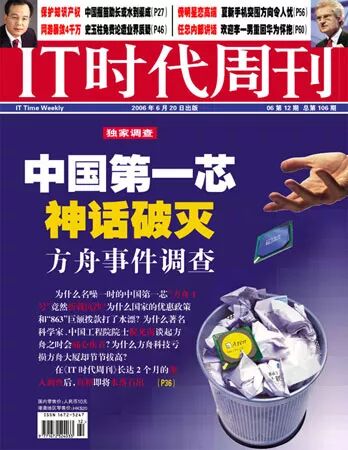
Meanwhile, Lenovo was at the peak of its life.
In 2004, Lenovo acquired IBM’s PC business. The Chinese were shocked: it had always been foreign capital swallowing domestic capital, yet there was a domestic capital acquisition of foreign capital?
For a time, Lenovo was regarded as the pride of Chinese brands, and Liu Chuanzhi was seen as the pride of Chinese entrepreneurs.
In 2005, People’s Daily released an article titled “The Relay and Evolution of Lenovo’s Three Generations of CEOs”. In the article,Lenovo’s rise was seen as a typical example of Chinese enterprises and a reflection of the Chinese economy.
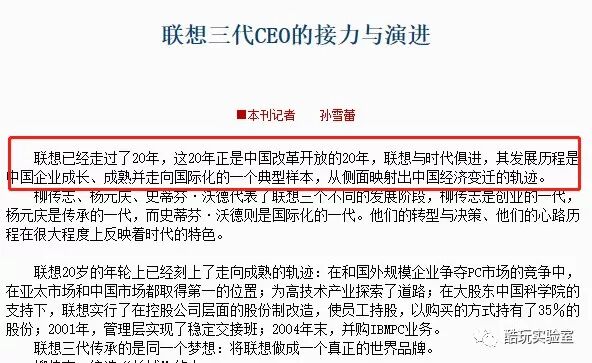
Ironically, just a year after acquiring IBM, Lenovo announced the relocation of its global headquarters from Beijing to New York, taking the first step towards becoming the “conscience of the American Empire”.
In the wave of marketization of the Chinese economy, more and more enterprises like Lenovo have grown and gone public, and naturally, more and more have the ability to conduct R&D.
However, after stumbling twice on profit-driven enterprises, Ni Guangnan never sought cooperation with any enterprise again.
However,even today, at the age of 80, he has never stopped advocating for domestic operating systems and chips.
Even if countless people say he carries that kind of Don Quixote “stupidity”, even if his lifetime reputation has long been lost in the eyes of many.
On his personal column on Blog China, he has only 50 followers. However, he has written 115 articles, almost all advocating for independently designed chips and operating systems, as well as open-source software.
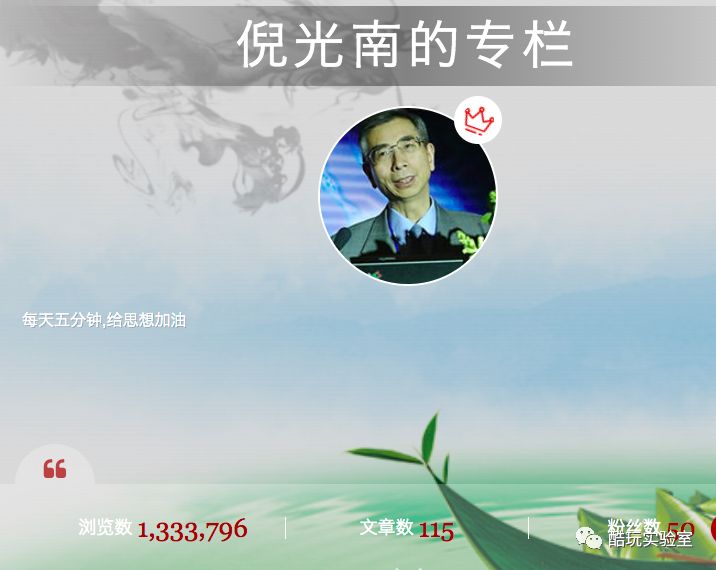
In 2005, 2006, 2007,…, 2017, 2018
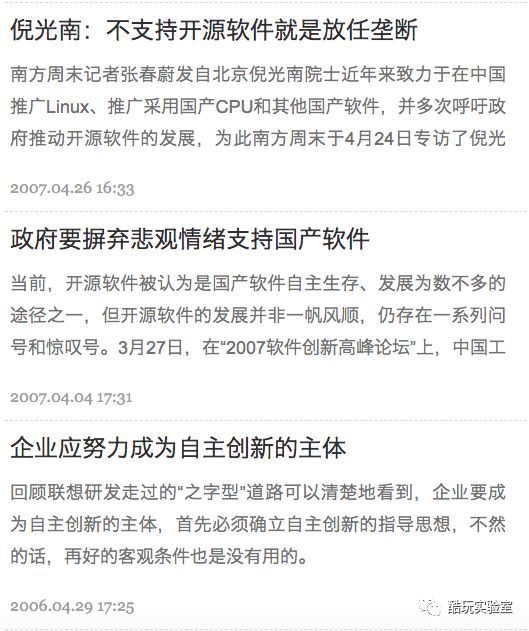
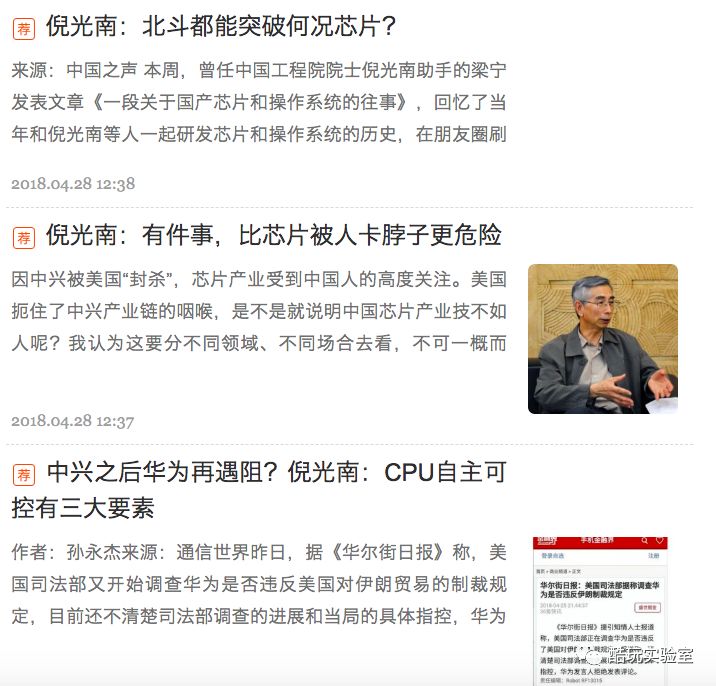
In 2013,he was also a major initiator in establishing the “China Intelligent Terminal Operating System Industry Alliance”, bringing in nearly a hundred member units for the alliance.
Until today, with a head full of white hair, he is still advocating for domestic chips and operating systems.
3
Today, Academician Ni Guangnan seems to have become the biggest “Lenovo critic”.
At the end of last year, at the Peking University Guanghua New Year Forum, Academician Ni Guangnan said, “Huawei and Lenovo over the past 30 years have been like the tortoise and the hare in a race.“
In 1995, Lenovo’s sales reached 6.7 billion yuan, 4.5 times that of Huawei;
By 2001, Huawei’s sales exceeded Lenovo, and as of December 22, 2018, Lenovo’s market value was 8.1 billion dollars, while Huawei’s valuation had exceeded 400 billion dollars, with a gap of nearly 50 times.
Huawei, which silently persisted in R&D and continuous innovation, ran ahead,while the clever hare, only seeing immediate benefits, fell far behind.
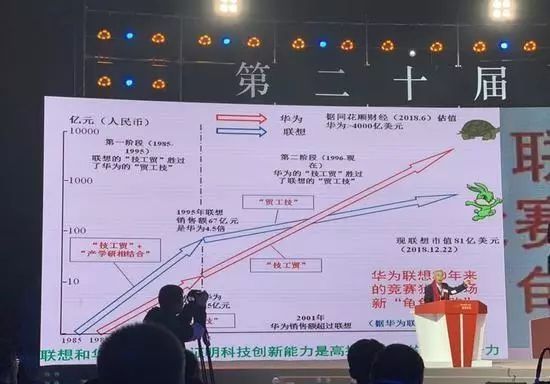
Academician Ni Guangnan himself has almost become the banner of “China’s independent research and development”.
Wherever you see an old man raising his arm and shouting, “Chinese technology must be independent and controllable”, it is Ni Guangnan.
Reflecting on the “Ark” project, he said: “This is a failure of the enterprise, not a failure of technology.”
What does this mean? The enterprise did not survive, but the attempt at technology was valuable. Software 1.0 is often not very good, so should we not do 1.0? 1.0 is not necessarily a failure; it is just a process. Without 1.0, how can there be 2.0?
From another perspective, “Ark” may have failed, but this does not mean that “Chinese chips” failed, nor does it mean that China’s independent research and development failed.
China has more than one “Ark”; we have countless Arks that are striving forward, just like today’s well-known Huawei’s “Noah’s Ark”.
And Lenovo?
Even if ridiculed by netizens, Yang Yuanqing still seems to be in high spirits. Compared to Ren Zhengfei, who is facing American sanctions, he appears to be more pleased.
In April 2019, Lenovo’s 2018 financial report was released, with annual revenue exceeding 50 billion dollars. CEO Yang Yuanqing summarized at the press conference:
“Now is the best time for Lenovo.”

At the same time, Huawei’s 2018 revenue exceeded 100 billion dollars. When Ren Zhengfei was asked by reporters:“Will Huawei fall next?”
Ren Zhengfei replied:“It’s only a matter of time.”
In May 2019, China’s high-tech industry, especially the chip and AI industries, was severely constrained by the United States, causing nationwide concern.
Yet Yang Yuanqing remained calm:
“Globalization is an inevitable trend,Lenovo does not intend to make operating systems and chips.“
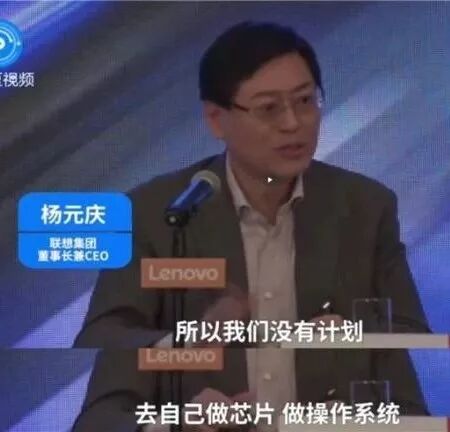
Ren Zhengfei also said that he supports globalization and that we should buy American chips, but he said this:
“We can manufacture all high-end chips ourselves. Even though our own chips cost much less,I still buy American chips at a high price because we cannot be isolated from the world; we should integrate into the world.”
A few days ago, Lenovo’s CFO Huang Weiming accepted an interview, stating that Lenovo had long had countermeasures for “increased tariffs from the US”:
Lenovo has manufacturing bases globally, and if the US increases tariffs on China, Lenovo maymove some production lines to countries not affected by tariffs.
Although later, Mr. Huang apologized for these remarks.
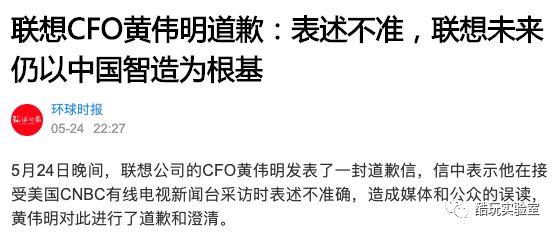
However, in his apology, he still said:
“Even ifindividual regional policies may affect us, we can still rely on Chinese manufacturing as a foundation, and throughglobal industrial chain layout, respond to potential issues.”
Who can tell me, is this a clarification or a play on words?
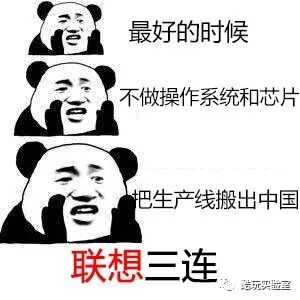
Lenovo is prepared with countermeasures, and Huawei is also prepared.
On May 21, the US Department of Commerce announced a 90-day delay in the ban on Huawei. Ren Zhengfei said:
“This 90 days is no longer significant for us becausewe are already prepared; we do not need this 90 days.“
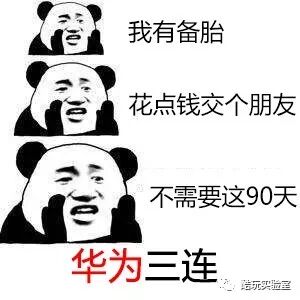
To be fair, Huawei aims to be number one in the world, but Lenovo is also among the Fortune 500.
Not everyone must be a great enterprise. First, one must survive, and then consider how to thrive.
Businessmen are profit-driven, which is understandable. Whether standing to earn or kneeling to earn, it is all earning.
However, it is inevitable to be criticized.
Ending
In 1998, Liu Chuanzhi publicly proposed that “trade, industry, and technology” is the development path Lenovo should take.
From that time until Lenovo’s acquisition of IBM in 2004, Lenovo’s reputation in China reached its peak, and some even described it as the “Liu Chuanzhi myth“.
Meanwhile, Ni Guangnan’s situation was very difficult.
Some believed that Ni Guangnan was too idealistic, too stubborn, and too selfish: “History cannot go back to 1995 and walk again according to Ni Guangnan’s wishes, whileLenovo today (in 2004) seems to be even more glorious than imagined in 1995.“
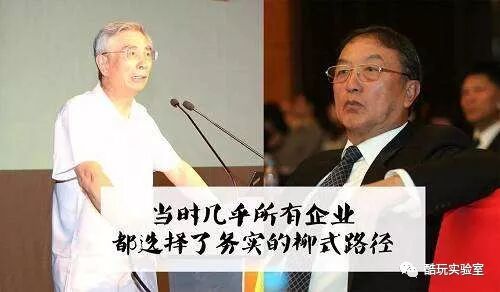
However, in reality, in the 8 years after Ni Guangnan left in 1995, Lenovo Group’s annual sales increased by less than 5 times.
Whereas in the 8 years before 1995, Lenovo Group’s annual sales increased by at least 60 times!
It wasn’t until around 2006 that voices began to reflect on the “Liu Chuanzhi myth”.
Agua, in the article “Cannot Lose Lenovo”, spoke up for Ni Guangnan and others: “Lenovo has overly mythologized the operations of Liu Chuanzhi and unjustly belittled the contributions of Ni Guangnan and others.”
He questioned:
“What supports the operations of Liu Chuanzhi yesterday are the technological achievements accumulated by Ni Guangnan the day before;
What supports the operations of Liu Chuanzhi today are the technologies that Ni Guangnan and others redeveloped after joining Lenovo;
What supports the operations of Yang Yuanqing tomorrow, what is it?“
This became a prophecy.
Ni Guangnan said that Huawei and Lenovo are like the tortoise and the hare in a race.
Now, the hare has awakened from its dream, only to find that the tortoise has crossed the finish line and is moving towards new goals. The hare does not want to chase; it just cannot catch up.
When Yang Yuanqing first became CEO of Lenovo Group, he wanted to return to the development path of “technology, industry, and trade”, proposing to increase Lenovo’s R&D investment to over one billion yuan annually.
However, due to years of delays, the loss of technological backbones, and insufficient technological accumulation, he ultimately failed. Yang Yuanqing had to choose to continue focusing on the production and sales of Lenovo microcomputers.
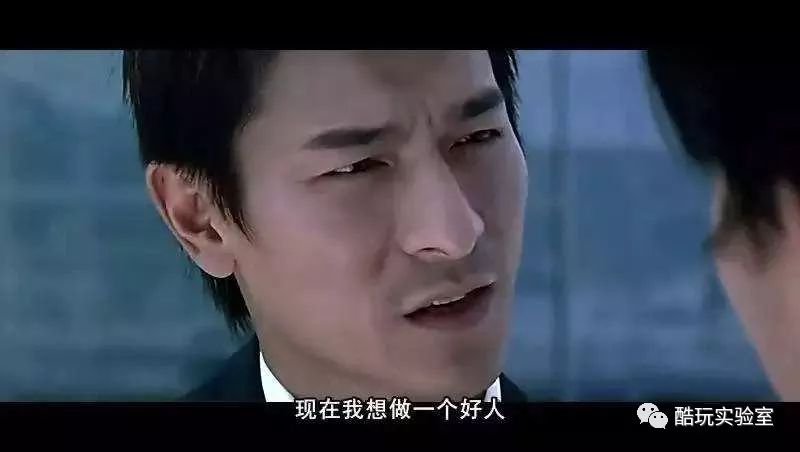
In fact, back in 1994, Lenovo had the opportunity to become the leader of “China’s independent research and development”.
Ni Guangnan once said: “Around 1994, when we (Lenovo) entered the communications field, the conditions in terms of brand, capital, and technology were much better than Huawei.”
While writing this article, I kept thinking, if Ni Guangnan had not left Lenovo back then, and Liu Chuanzhi had listened to his advice, what would Lenovo be like today?
Perhaps Lenovo could not withstand the enormous R&D expenses and would have long gone bankrupt and disappeared like “Ark”.
Perhaps China would now have two Huaweis.
Gibran said in his famous work “My Heart Has Only Been Sad Seven Times”:
“My heart has only been sad seven times… Once,between difficulty and ease, I chose ease.“
I think if given a choice, no one wants to be the conscience of the American Empire. However, having earned easy money until today, it is already impossible to turn back.
Doing nothing and not stopping. Just surviving has already exhausted all efforts.
To be honest, I really want to write a fan fiction called “Rebirth: I Am Liu Chuanzhi”. If I won’t be sued by Liu Chuanzhi.
If it could start over, would you choose the more difficult path instead of Liu Chuanzhi?

Now settled in
Today’s headlines, Tencent Penguin Number, Sohu Number, Sina Kandian, Yidian Information, Interface, NetEase, Tiger Sniff Network, Titanium Media and other platforms,
covering the core audience of business and finance.
Recommended reading: (Click the blue text below)
Heavy headlines:2019 (13th) Su Business Leaders Annual Meeting / 2018 World Intelligent Manufacturing Conference / 2018 (6th) Su Business Conference / 2018 Digital Jiangsu Summit / 3rd Golden Jasmine / 2018 Su Business Leaders Annual Meeting / “System Thinking” Report Meeting / Big Health Industry Summit / 2017 World Intelligent Manufacturing Conference / WIMS Famous City Meeting / 19th National Congress Report / Su Business Industry and Finance FamilyIndex Report / Yunnan Study Tour
Su Business Forum:Shagang Shen Wenrong / Hongdou Zhou Haijiang / Jinbo Jiang Baoquan / Yuan Dong Jiang Xipei / Yingda Technology Shi Weibin / Famous Economist Fan Gang / Dialogue with Mu Qizhong / Academician Lu De of the Asian Knowledge Management Association / Former Minister of Industry and Information Technology Li Yizhong / Famous Economist Lang Xianping / Nanjing University ProfessorQian Zhixin / Famous Financial Commentator Ye Tan / Geely Li Shufu / Gree Dong Mingzhu / Hengtong Cui Genliang / Xugong Wang Min / Yangtze River Shipbuilding Ren Yuanlin / Yangtze River Pharmaceutical Xu Jingren / Bosideng Gao Dekang / Nanjing University Fan Conglai
One study, six meetings:Walk into Zhongyifeng / Ask about Guangming Group / Su Business · Qixia Secretary and District Chief Face to Face / Su Business · Zhenjiang Mayor Face to Face / Walk into Arctech / Ask about Jiangsu Tiancheng Technology / Walk into Alibaba / Walk into Yonggang Group / Walk into Changdian Technology / Walk into Victory Precision / Walk into Daya Technology Group / Walk into Longliqi Group / Suqian Entrepreneurs Su Nan Famous Enterprise Tour / Walk into Yangtze River Pharmaceutical / Walk into Xugong Group / Walk into Zhongnan Group / Walk into Huaihai Holdings Group / Walk into Aikang Group / Walk into Yinbao Holdings / Ask about Changsheng Group
Connecting Su Business:Gree Dong Mingzhu / Hengtong Cui Genliang / Jianhua Building Materials Wang Gang / Xinhai Petrochemical Fan Jianmin / Jinbo Jiang Baoquan / Fuzhong Yang Zongyi / Luolai Xue Weibin
END